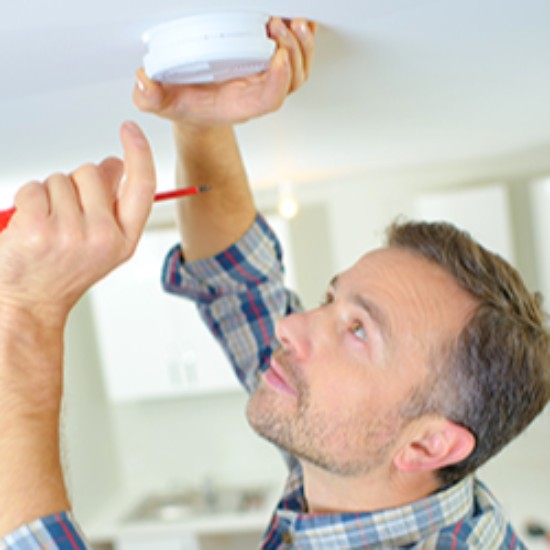
Working smoke detectors or smoke alarms greatly decrease the risk of injury or death in a fire. Like any Life Safety device, smoke detectors and alarms need to be inspected, tested and replaced on a regular schedule to ensure they work effectively.
Smoke Alarms and Smoke Detectors
As we discussed in our blog Smoke Alarms, there is a difference between a smoke alarm and a smoke detector. A smoke alarm is a stand-alone device with a built-in sounder, a power supply, and a sensor. A smoke alarm is not connected to a fire alarm control panel, but may interconnect with other smoke alarms within the building. A smoke detector is part of a commercial fire protection system, it has only a built-in sensor and sends information to the fire alarm panel.
Technology Lifespan
However, the sensing technology within smoke alarms and smoke detectors are the same – primarily, photoelectric smoke detection. This sensing system can become less responsive as it ages. To ensure your people and assets are protected, you should replace all smoke detectors and smoke alarms when they are 10 years old. To determine the age of your alarm/detector, look at the back where you will find the date of manufacture.
Inspections
You should test your smoke alarms once a month by pushing the test button. Twice a year you should replace the batteries in all of your smoke alarms, it is encouraged that you do this when your clocks change for daylight savings as it serves as a regular reminder. You can clean your smoke alarms by vacuuming the outside, do not remove the alarm’s cover to vacuum.
Smoke detectors will be professionally inspected on an annual basis when your fire alarm system is inspected and tested. Your Life Safety Partner will check for the proper signal reception from the detectors at the alarm panel, clean your smoke detectors, and, when required, perform a sensitivity test.
A1 is a leading expert on the latest technology in life safety. To find out more information or to ask a question, click here or call us at 1-800-859-6198.
